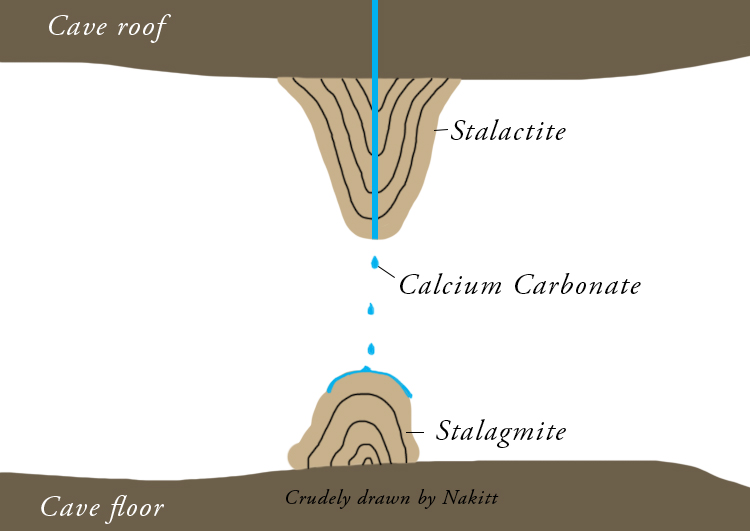This Earthcache is accessible from the entrance to the tunnel by just looking up - the coordinates should take you to the end of the tunnel where there are benches and the "Raynes Park" mural to be able to answer the relevant questions. There is no physical container at the given coordinates; instead you must answer the questions below based on what you learn at GZ.

What are they?
Stalactites are structures formed from a build up of deposited minerals found in water. Stalactites are usually found in caves but they can also sometimes be found in urban settings like these ones are. They are also known as "stonicles" (stone + icicle).
How do they grow?
As water filters down through the ground into a cave beneath it, it dissolves the calcite in the limestone it is travelling through to form calcium bicarbonate. As this solution then drips through cracks in the cave ceiling and is exposed to air, it transforms into calcium carbonate and calcite begins to form; creating a stalactite. As more water trickles down, more calcite is deposited and the stalactite grows longer.
“But this isn’t a cave we’re standing in, so how are they growing here?”
Stalactites can also form on concrete structures such as this tunnel. When a stalactite forms in a manmade setting it is called a Calthemite. Concrete contains calcium oxide which doesn’t naturally occur in caves. The calcium oxide reacts with rainwater seeping through the concrete and it creates a solution. The solution eventually seeps to the bottom of the concrete tunnel over your head and it will then drip down to the ground. The carbon dioxide in the air then reacts with the solution which creates calcium carbonate. Over time, as the solution continues to seep and drip down from above, small particles of the calcium carbonate will be left behind and grow into a calthemite. Generally, calthemites grow a lot quicker than stalactites due to the majority of calthemites being created by chemical reactions which are different to normal stalactite chemistry.
What is a stalagmite then?
A stalagmite usually grows where a stalactite is. As the water drips off the tip of the stalactite on the ceiling onto the floor below, it deposits more calcite. Over time the calcite on the floor builds up to form a mound and a stalagmite is born. In some caves where there has been no disturbance or interferance, the stalactite and stalagmite beneath it both grow so large that they eventually meet and form one large pillar.
To log this Earthcache answer the following questions either via the message facility or email. You do not need to wait for a reply before logging - however, incorrect/incomplete logs or no answers being sent will result in your log being deleted.
1. a) In the middle of the arch is a neat cluster of calthemites - how many can you count?
b) Look at the stalagmites beneath - why do you think they're only as small as they are in this particular setting?
2. Do calthemites grow faster or slower than stalactites? Why?
3. What is the name of the calcium solution that drips down to form the stalactites and stalagmites?
4. (Optional) Post a photo of you/your GPS in front of the tunnel.